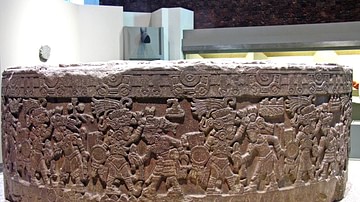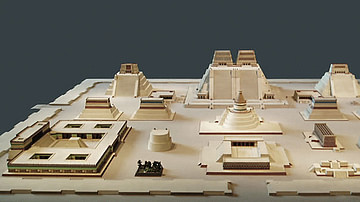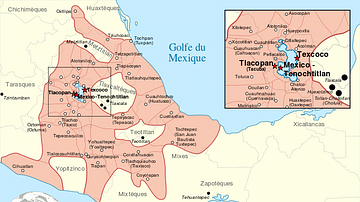Search
Search Results

Article
The Tizoc Stone
The Tizoc Stone is a huge stone cylinder from the Aztec capital of Tenochtitlan which depicts a sun-disk on its flat upper surface and carries a frieze around its outer edge showing Aztec warriors and the Aztec king Tizoc, whose reign from...

Definition
Hernán Cortés
Hernán Cortés (1485-1547) was a Spanish conquistador who led the conquest of the Aztec Empire in Mexico from 1519. Taking the Aztec capital of Tenochtitlan in 1521, Cortés plundered Mesoamerica as he became the first ruler of the new colony...

Definition
Huitzilopochtli
Huitzilopochtli (pron. Huit-zi-lo-pocht-li) or 'Hummingbird of the South' or 'Blue Hummingbird on the Left' was one of the most important deities in the Aztec pantheon and for the Méxica he was the supreme god. He was the god of the sun and...

Definition
The Conquest of New Spain
The Conquest of New Spain by Bernal Díaz del Castillo (1492 to c. 1580) is an account written in 1568 of the early Spanish colonization of Mesoamerica, specifically the conquest of the Aztec civilization in Mexico from 1519 to 1521 when Díaz...

Definition
Tenochtitlan
Tenochtitlan (also spelled Tenochtitlán), located on an island near the western shore of Lake Texcoco in central Mexico, was the capital city and religious centre of the Aztec civilization. The traditional founding date of the city was 1345...

Image
Aztec Sun Stone
The Aztec Sun Stone (also known as the Calendar Stone) is a representation of the five eras of the sun from Aztec mythology. The stone was part of the architectural complex of the Temple Mayor of Tenochtitlán and dates to c. 1427 CE. The...

Image
Ancient Egyptian Music and Dancing
This painting from the Tomb of Nebamun (c. 1350 BCE) shows women making music and other almost naked women dancing.

Image
Western Classical Music, c. 1700-1950
An infographic showcasing the evolution of musical styles and the creative contributions of a plethora of classical composers through four distinct periods in art history: Baroque, Classicism, Romanticism, and Modernism.

Image
Map of the Aztec Empire, c. 1427–1521 - The Rise and Fall of Mesoamerica’s Warrior Kings
This map illustrates the origins and territorial expansion of the Aztec Empire in Mesoamerica between the 14th and 16th centuries. Emerging from a network of Nahua-speaking city-states in central and southern Mexico, the empire rose to dominate...

Image
Aztec Empire
A map indicating the maximum extent of the Aztec civilization which flourished between c. 1345 and 1521 CE in what is now Mexico. The three major cities which formed the Aztec Triple Alliance were Tenochtitlan, Texcoco and Tlacopan.